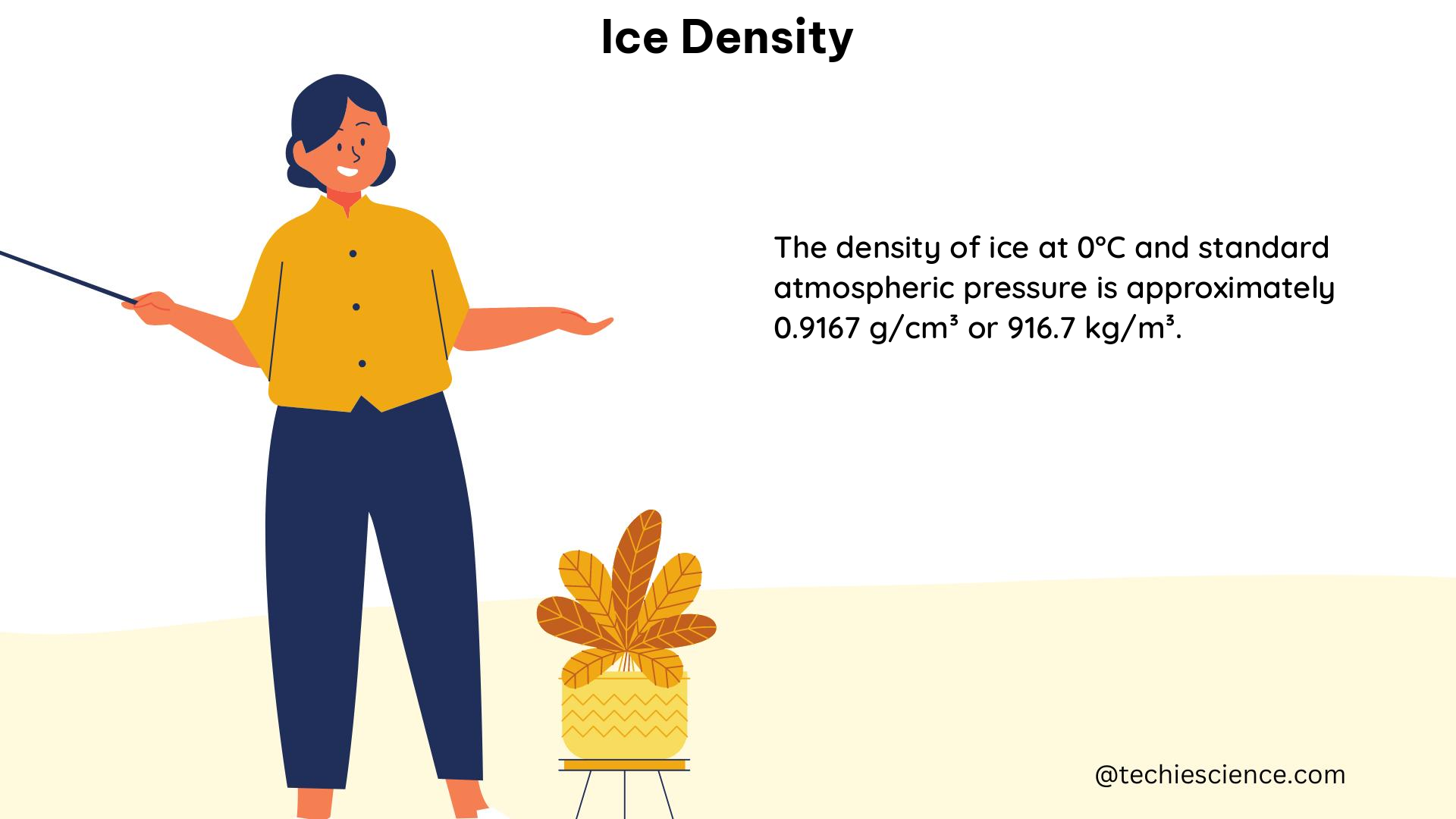Ice density is a crucial physical property that plays a vital role in various fields, including climate modeling, glaciology, and engineering. This comprehensive guide delves into the intricacies of ice density, providing a wealth of technical details and practical applications to help you gain a deeper understanding of this fascinating topic.
Factors Affecting Ice Density
The density of ice can vary depending on several factors, including:
- Temperature: The density of ice increases by approximately 1.5 kg/m³ for every 10°C drop in temperature.
- Salinity: The density of ice increases by around 1.4 kg/m³ for every 1‰ increase in salinity.
- Gas Content: The presence of air bubbles or other inclusions in the ice can affect its density, with higher gas content leading to lower density.
Measuring Ice Density

Measuring the density of ice is a complex process that requires multiple methods and instruments. The Operation IceBridge (OIB) mission, for example, utilizes two independent sets of instruments to collect sea ice data:
- Airborne Topographic Mapper (ATM): Measures the ice surface elevation.
- Radar Systems: Four different types of radar are used to measure the ice thickness and snow depth.
By comparing the freeboard (the amount of ice that sits above the sea surface) with the sea-surface elevation, the ice thickness can be calculated using the density of the seawater and the density of the ice.
Predicting Ice Density
Researchers have developed models to predict the density of ice based on various parameters. One such model, presented in the article “Experimental Research on Ice Density Measurement Method Based on Sound Velocity, Temperature, and Salinity,” establishes a relationship between ice density, sound velocity, temperature, and salinity.
The formula for this model is:
ρ = m/V
Where:
– ρ is the density of the ice
– m is the mass of the ice
– V is the volume of the ice
Ice Density in Ice Clouds
The density of ice particles in clouds is also an important parameter for understanding the properties of ice clouds. The study “Effective Ice Particle Densities Derived from Aircraft Data in Ice Clouds” uses aircraft data to derive effective ice particle densities, which are defined as the ice particle mass divided by the volume of the particle.
The mean density of ice particle ensembles is explored, as it is a crucial factor in describing the amount of cloud ice, its vertical transport, and the characteristic radiative properties.
Implications of Ice Density Variations
While the sources provide a comprehensive overview of the factors that affect ice density and the methods used to measure it, they do not explicitly discuss the implications of ice density variations for ice dynamics and climate. From a physics perspective, the density of ice is a key parameter that affects the buoyancy, strength, and deformation of ice.
Variations in ice density can lead to changes in ice thickness, roughness, and albedo, which in turn can affect the energy balance and climate of the Earth. Understanding the processes that control ice density is essential for predicting the behavior of ice in response to climate change.
Theorem and Formulas
The density of ice can be calculated using the following formula:
ρ = m/V
Where:
– ρ is the density
– m is the mass
– V is the volume
The freeboard of sea ice can be calculated using the following formula:
freeboard = ice surface elevation – sea-surface elevation
The ice thickness can then be calculated using the following formula:
ice thickness = freeboard x (ρseawater/ρice – 1)
Where:
– ρseawater is the density of seawater
– ρice is the density of ice
Physics Example
Suppose that the ice surface elevation is 0.5 m above the sea surface, and the density of seawater is 1025 kg/m³, and the density of ice is 917 kg/m³. Using the formula for freeboard and ice thickness, we can calculate the freeboard as follows:
freeboard = 0.5 m
And the ice thickness as follows:
ice thickness = 0.5 m x (1025 kg/m³/917 kg/m³ – 1) = 0.14 m
Therefore, the ice thickness is 0.14 m.
Physics Numerical Problem
Suppose that the temperature of ice is -10°C, and the salinity is 5‰. Using the formulas provided in the “Experimental Research on Ice Density Measurement Method Based on Sound Velocity, Temperature, and Salinity” article, calculate the density of the ice.
Figures and Data
Figure 6 in the “Experimental Research on Ice Density Measurement Method Based on Sound Velocity, Temperature, and Salinity” article shows the density of gas-free ice samples as a function of temperature for four different ice salinities (0, 2‰, 5‰, and 10‰). The density values represent upper bounds on ice density at the corresponding salinities and temperatures.
References
- It takes a lot of instruments to collect ice measurements!
- Experimental Research on Ice Density Measurement Method Based on Sound Velocity, Temperature, and Salinity
- Effective Ice Particle Densities Derived from Aircraft Data in Ice Clouds

The lambdageeks.com Core SME Team is a group of experienced subject matter experts from diverse scientific and technical fields including Physics, Chemistry, Technology,Electronics & Electrical Engineering, Automotive, Mechanical Engineering. Our team collaborates to create high-quality, well-researched articles on a wide range of science and technology topics for the lambdageeks.com website.
All Our Senior SME are having more than 7 Years of experience in the respective fields . They are either Working Industry Professionals or assocaited With different Universities. Refer Our Authors Page to get to know About our Core SMEs.